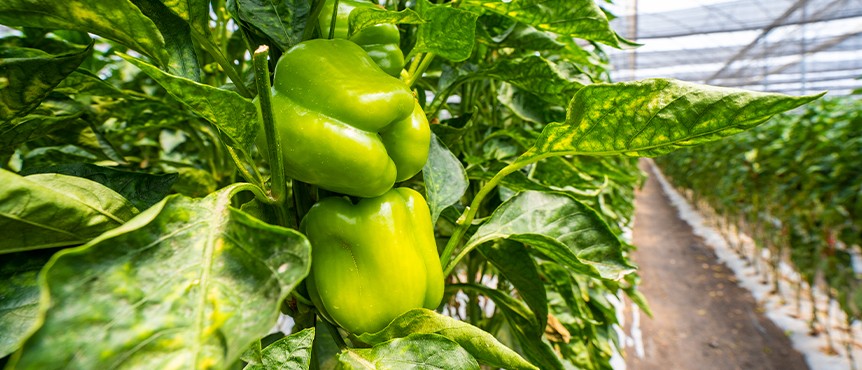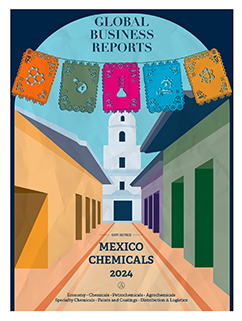The opportunity of new technologies
RELATED PUBLICATION
ARTICLES FROM THIS PUBLICATION
Agrochemicals in Mexico

Image courtesy of Syngenta
Mexico’s agricultural sector employs more than 5 million people, providing the nation with tens of billions of dollars in annual exports. Behind recent export growth has been Mexico’s innovative crop protection industry. Recently, strong demand for Mexican beverages such as tequila and mezcal, has given this industry an added boost. Luis Eduardo González, former president of the Mexican Union of Agrochemicals Manufacturers and Formulators (UMFFAAC), stated: “There is still untapped potential. About 60% of our agriculture is small and subsistence farming, so there is much potential for this segment to be better trained and equipped, introduced to technological farming methods, and to diversify the crops in cultivation.”
By some measures, the agricultural sector has performed strongly; according to the Ministry for Agriculture and Rural Development (SADER), the Mexican agricultural trade in the first nine months of 2023 was worth US$72.4 billion, with an agricultural trade surplus of US$6.09 billion.
However, overall the agrochemical market was challenging in 2023, with low demand and low prices. Companies had to be highly disciplined about managing inventory and cost structure. “There has been a correction within the agrochemical industry, especially in inventories in the major agricultural markets such as Brazil and the US,” said José María Bermudez, CEO of Viakem, a contract and development manufacturing company. “We observed a significant drop in demand, not due to any structural cause, but because of the ups and downs after the pandemic and the volatility created along the value chain.”
Climate disasters and regulatory headwinds have both stifled the industry’s growth prospects. Regulation, in particular, has been a central challenge. Throughout the interviews held for this report, executives in the crop protection space emphasized the burden imposed by regulation that is excessive and, at times, illogical. Dr. César Parada, Valent de México’s general director, said: “For many crops, the decisions made by the Mexican government look more political than based on technology and science.”
Climate Risks: Drought
If 2023 will be remembered for one thing by Mexico’s farming community, it will be for the lack of rain. Rain shortfalls represent a growing threat to Mexico’s agricultural industry. Javier Valdés, CEO of Syngenta, said: “2023 has been a very challenging year in Mexico in terms of rainfall, the driest year in the last thirty. Mexico has suffered from some extreme temperatures. The dams are at their lowest point in years, and we have had many crop losses.”
According to data from Conagua, the Mexican National Association for Water, moderate to extreme drought conditions increased by 8.45% in 2023, and in June 2023, rainfall levels were 61% lower than the 1991-2020 average for the same month. These climatic challenges have impacted Mexico’s food production, dropping the country from 9th to 10th on the list of largest global food producers in 2023.
Mexico’s agricultural sector consumes 75% of the country’s water, according to Conagua, though there are competing demands for access to water as Mexico’s population and economy grow. Booming cities in the north, such as Monterrey, exacerbate this problem. The lack of rainfall has been impactful and has social implications, setting the stage for competition over water between rural and urban areas. The dry season has impacted sales of certain agrochemical products in the country. According to Nery Echeverría, head of sales in Mexico at Bayer Crop Science: “We have had lower demand throughout the industry for weeds control products because this year has had less rain, and less rain means less weeds.”
In addition to dry weather conditions, the sector confronted other climatic risks in 2023, including storms. In October 2023, Hurricane Otis devastated Guerrero state’s coastline, causing catastrophic damage to the city of Acapulco and inundating crops across the region. Climate cycles are becoming less predictable, introducing new risks. Luis Osorio, executive director of the industry association Protection of Crops, Science, and Technology (PROCCyT), stated: “The global population is growing, yet agriculture faces multiple challenges: Climate change, natural disasters, and regulatory challenges.”
The government has taken steps to mitigate the water stress caused by the lack of rainfall and intense competition for water between rural and urban areas, including restricting water access to the industrial sector in some affected regions such as Jalisco, Michoacán, Nuevo Leon, and Tamaulipas, among others. The government is also incentivizing changes, promoting crops such as rapeseed, which need far less irrigation than many of the fruits and vegetables commonly planted, while discouraging corn production.











